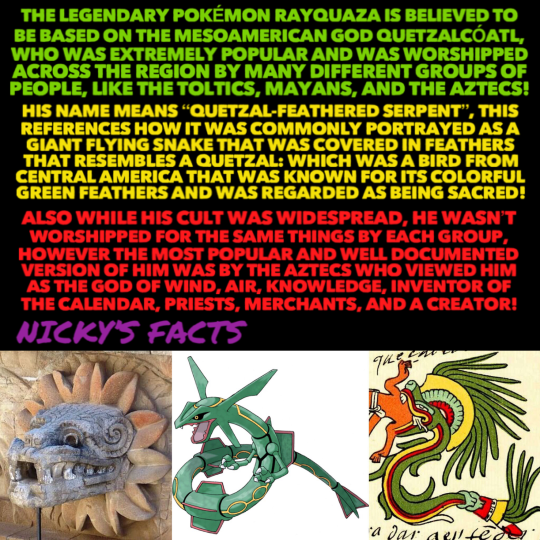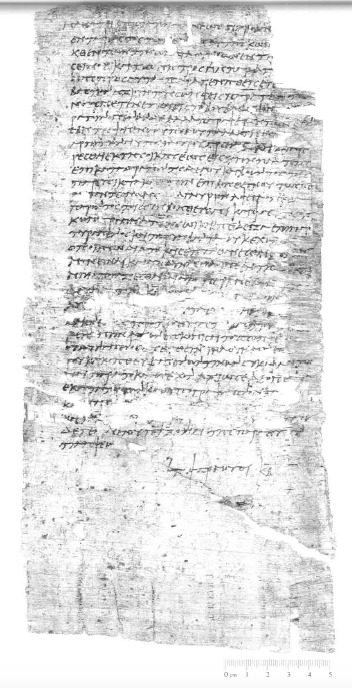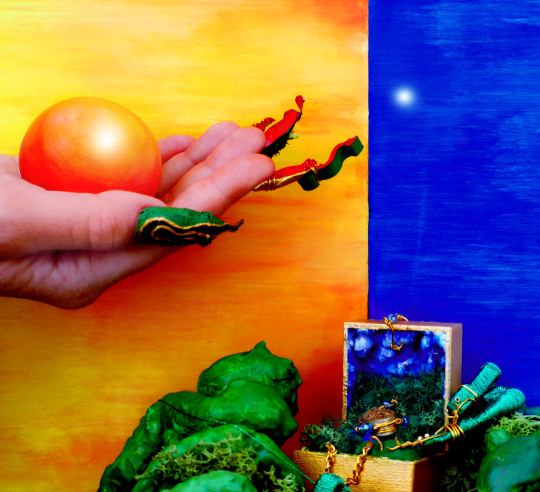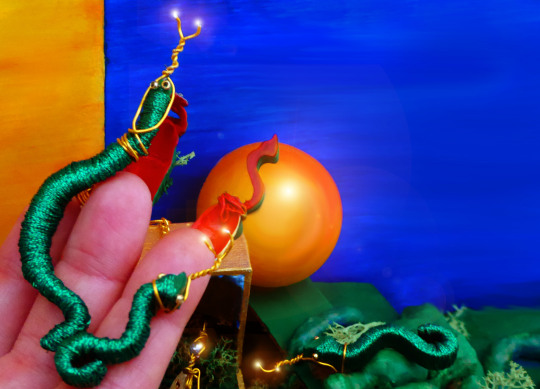#Sacred Animals
Note
FUN FACT SCREECH OWLS TEND TO MOLT THEIR WHOLE HEAD AT ONCE HEADCANON THAT THERES A FEW WEEKS ONCE A YEAR WHEN ATHENA REFUSES TO REMOVE HER HELMET CAUSE SHES MOLTED AND NOW BALD THANK YOU FOR YOUR TIME
THANK YOU FOR THAT HEADCANON, I NEVER KNEW I NEEDED IT.
Now, imagine the gods sometimes behaving like their sacred animals. Hera flexes her peacock tails at parties. Ares just spits acid fluid like his vulture whenever he's in a fight. Apollo pretends to sing beautifully then gives a demonic screech like his swans.
#athena#hera#ares#apollo#greek goddesses#greek gods#greek deities#sacred animals#headcanons#tumblr ask#ask me anything#anon ask
37 notes
·
View notes
Text
"During the fifth century, when Polykleitus made Hera's cult-statue for her Argive sanctuary, it seems that the cuckoo was considered to be the bird-attribute of this goddess. But six centuries later, Hadrian thought it appropriate to dedicate a gold peacock in the same shrine; for by this time the peacock had become Hera's most prominent associate among the birds. Athenaeus records that peacocks were sacred to Hera, and that they were kept in her sanctuary of Samos; and although he was writing himself only in 200 AD, he was quoting Antiphanes and Menodotus who probably lived in the fourth and third centuries BC, respectively. At all events, during the second century BC, Samian coins began to be minted on which both Hera and her peacock are represented. Both Ovid and the commentator on Euripides explained the appearance of the peacock's tail-feathers by relating the story that when Argus was killed, Hera removed his hundred eyes and placed them in the tail of her bird. This legend shows how the Samian bird had been absorbed into the mythology of Argos, Hera's other principal domain; and explains why Hadrian dedicated his jewelled peacock; but it happened late in the history of the sanctuary. …
In fact, the peacock is rarely represented in Greek art, and the first certainly dated instances of Hera with this bird are Samian coins of the second century BC. It may be argued, however, that the association was established much earlier, during the Archaic period; on the evidence of the scene portrayed on an ivory comb made in about 700 BC. This object happens to have been dedicated to Artemis Orthia in Sparta; … The scene is the Judgment of Paris, and shows the three rival goddesses each with a typical attribute. Aphrodite holds a dove, Athena wears a helmet, and the third goddess, Hera,is accompanied by a bird "which must be supposed to be the peacock" But there is in fact little reason, apart from its long neck, to identify this bird as a peacock. The supposition appears to be based on external evidence of a later date; and I believe it possible that the artist is simply depicting a water-bird, an appropriate enough attribute for Hera, as for many an unspecified Archaic potnia theron. … …
According to the literary evidence cited above, the peacock cannot certainly be associated with Hera any earlier than the fourth century, and then only in Samos. I believe it possible that the Samians may have regarded the peacocks of the Heraion simply as material property of the sanctuary, and not at first, as sacred birds in a religious sense. The aetion for Hera's patronage of the peacock was probably (as the literary evidence suggests) of late invention. The only peacock-representations to be identified with certainty at any of the sanctuaries examined here are the terracotta and marble fragments from the Argive Heraion, which have not been dated, but may well have belonged (like Hadrian's jewelled bird) to the Roman period. In this period, the painted terracotta peacock's tail may have been part of an akroterion or antefix decorating the temple. Waldstein rejected his own original definition of the Geometric bronze bird from this sanctuary as a peacock, and although the bird on an Archaic engraved stone from Perachora could be a peacock (with crest and fan-shaped tail), it is rather small to identify with certainty.
I have suggested that Hera, as one of the Olympian successors to an older potnia theron, may originally have had the attribute of an unspecified water-bird; and that this bird (as I believe it appears on the comb from Artemis Orthia) became a peacock only after the Samian peacocks acquired their reputation. In view of the fact that while peacocks are known to have been dedicated at the Argive Heraion, no remains of their images have come to light at the Samian sanctuary; and since it is King Arguswho figures in the aetion for the peacock's tail, it is even possible that Hera's special association with the peacock, though inspired by the Samian birds, was an Argive invention. The scarcity of peacock-representations in her sanctuaries is therefore not really inconsistent with literary evidence as it has survived. On the other hand, nearly 200 representations of birds of various other kinds (including water-birds) have been reported in the Heraia considered in this study."
- Representations of Animals in Sanctuaries of Artemis and of Other Olympian Deities by Elinor Bevan
#hera#birds#peacocks#samos#samian heraion#argive heraion#argos#attributes#sacred animals#excerpts#quotes#exactly what I've been saying!
8 notes
·
View notes
Text
"The spider (lokken), the frog ('klossu') and the lady bug (Marie nyckelpiga) are sacred. To intentionally kill any of these animals is a great sin, for which you will be punished. Either by your cows giving blood [instead of milk], or in some other way.
Many people consider the frog to be a förhamning* of a person. You will find many similarities between human hands and the feet of a frog.
- When a ladybug lands on you, you would usually say 'Liten, liten piga, hvart vill du flyga, norrut eller sorrut, österut eller västerut?' (Teeny tiny maid, where will you fly, to the north or to the south, to the east or to the west?) Then you let it fly.
The dor-beetle (tordyvel) also belongs to the sacred or protected animals, and [it is believed that] people who harass them will be punished."
- Johannes Klockars, Skrock och vidskepelse bland Malaks allmoge
*Hamn = shape (in this context only). Förhamning means something like "the state of being in a hamn" Compare with Freja's cloak of feathers (fjäderhamn or fågelhamn in Swedish).
#marie nyckelpiga#klossu#lokken#spiders#ladybugs#frogs#sacred animals#dor-beetle#grodhamn#förhamning#cows#poor cows though#österbotten#sweden#scandinavian folklore#folklore
73 notes
·
View notes
Text
Saxo udává zajímavý postřeh týkající se vlaštovek, které si pod ústy sochy [Rujevíta] postavily hnízdo, což mělo vyvolat velkou veselost u Dánů: "Vlaštovky, které si vystavěly hnízda pod obrysy obličeje [sochy], totiž vypouštěly na její hruď hojné střevní nečistoty." Tito ptáci však byli považováni mezi Slovany za symbol jara- "boží posly"- a v posmrtných představách za jedno z možných zosobnění lidské duše. Proto platil přísný zákaz jejich usmrcení, jenž se porušoval pouze ve výjimečných případech- srdce vlaštovky prý patřilo k prostředkům, které dokázaly roznítit milostnou touhu.
~
Saxo makes an interesting observation regarding the swallows that built their nest under the mouth of the statue [of Ruyevit], which was to cause great mirth among the Danes: "For the swallows that built their nests under the contours of the face [of the statue] discharged abundant intestinal impurities on its chest. " However, these birds were considered among the Slavs as a symbol of spring - "messengers of gods" - and in images of afterlife, as one of the possible incarnations of the human soul. That is why there was a strict ban on killing them, which was violated only in exceptional cases - the swallow's heart was said to be one of the means that could ignite amorous desire.
Bohové dávných Slovanů ~ Gods of ancient Slavs (Martin Pitro, Petr Vokáč)
Swallows as a symbol of spring remained in Czech folklore.
#Slavs#Ruyevit#myths#traditions#sacred animals#swallows#gods#Czech#Saxo Grammaticus#Bohové dávných Slovanů#Martin Pitro#Petr Vokáč#V#books#quotes
6 notes
·
View notes
Text
Sometimes, I think about how much my ancestors loved and respected dogs, and I feel all the feels again.
18 notes
·
View notes
Text

All praise the God of the Sky, the one who ended the fighting!
🐍🇲🇽
#history#rayquaza#quetzalcoatl#mesoamerica#mythology#pokemon#aztec#mayan#toltec#game freak#myth#legendary pokemon#mexico#indegenous americans#sacred animals#pokemon emerald#pokemon alpha sapphire#pokemon omega ruby#native american history#central america#mexican history#aztec mythology#hoenn region#quetzal#nickys facts
17 notes
·
View notes
Text
What animal/bird fits best with Viktor? I need to know for an upcoming AU that I’m already in the process of writing
#tua#the umbrella academy#writing#fanfiction#fanfic#fiktor#viktor hargreeves#questions#animals#sacred animals
9 notes
·
View notes
Text
I wonder if Hellenic polytheists can help me out with this one: there's a lot of websites about Greece saying that black rams were one of the most sacred animals to Hades, supposedly because their "vicious nature" and dark colour symbolised death itself. Is there any basis to that? I've performed a book source search and have come up short.
3 notes
·
View notes
Text
Sacred animals and especially cats in ancient Egypt
“ Kittens for Bastet
Jennifer Cromwell and Luigi Prada

Relief of Bastet, Kom Ombo
On 20th April, either 202 or 178 BCE, an embalmer named Onnophris wrote to Machatas, an official (epistates) in the village of Tanis in the Fayum semi-oasis, concerning kittens he had donated to the cat-goddess Bastet (also known by her Greek name of Boubastis), or at least had intended to donate!
“Since some kittens were born in my house and their mother did not attend to them, I went to the temple of Bastet and asked the dancers [i.e., priests] to come and to carry them back to the temple of Bastet. After they did not arrive, but went elsewhere, it happened that the kittens, while they were being weaned by me with milk at home, were snatched by a tomcat and carried down out of the house into the street. I rushed down and called for help to those who were present and heard. Thus, we stood about and with difficulty removed one kitten, those who had joined to help including Phasis, the village scribe, to whom I gave an official testimony of all that had happened.” (Based on the translation by R. W. Daniel)
The tomcat killed some of the kittens – even though this is not explicitly stated (perhaps intentionally so, out of religious propriety regarding such an unholy happening), the loss of sacred animals is why Onnophris sounds so panicky in this petition.
Onnophris then collected the surviving kitten and took it to the temple of Bastet, handing it over to some of its priests – the same people who had neglected to collect the kittens from his house before the incident took place. To protect himself from future accusations that he acted improperly in this situation, he asked the village scribe Phasis – an eyewitness to the tomcat’s attack – to write down Onnophris’ account of events. Additionally, as an added level of protection, Onnophris also had this plea written:
“So that I am not later denounced in an unseemly way, certain persons having acted maliciously, I beg and request you that, having subscribed regarding each of these statements … [text lost].”
But why did Onnophris have to go to such lengths?

P.Köln XV 594 (c) Cologne Papyrus Collection (inv. 21358)
The reason lies in the importance that animal cults had in ancient Egypt, especially in the later phases of the country’s history, including the Ptolemaic and Roman Periods. Overall, animals could play a twofold role in Egyptian religion: some were actual divine animals, physical incarnations on earth of a deity; others, instead, were sacred only in that they were associated with a deity in a ritual fashion. The best example of a proper divine animal is the Apis bull worshipped in the ancient capital of Memphis: honoured even by Alexander the Great on the occasion of his Memphite visit, the Apis was reborn and had to be identified each generation into another bull – almost like a bovine counterpart to the Dalai Lama – and his cult thrived for centuries on end.
As for the other kind of animal cults, its premise lay in the fact that many deities of the Egyptian pantheon had animal associations. Their zoomorphic appearance, and their representation in Egyptian art as animals or as animal-headed humans, is what comes first to mind: think of the god Horus, with his falcon head, or of the aforementioned Bastet, often pictured as a cat, or a cat-headed woman. It is thus no surprise that Egyptian deities could also be worshipped by ritually dedicating animals to them. This applies both to living animals, as in the case of the kittens that Onnophris planned to present to the local temple of Bastet, but it was also true with dead (often, ritually euthanised) animals, whose mummified remains were dedicated in their thousands by pious visitors as ex-votos and buried in sometimes huge catacombs, which archaeologists are still exploring to this day.

Catacombs at Tuna el-Gebel (the necropolis of Hermopolis), where thousands of mummified ibises and baboons have been found
Once dedicated, these animals were the sacred property of the relevant deity. It is thus understandable why Onnophris sounds so worried in his petition, fearing not so much the goddess’ punishment – as the kittens were killed through no direct fault of his – but rather legal problems. Indeed, the special status of sacred animals was sanctioned in a number of Egyptian texts: legal texts from this time discuss the abuse of sacred animals and the resulting penalties, and people are warned against hurting them in wisdom texts too, compositions that contained moral instructions as to how a rightful person ought to behave. Thus, the demotic papyrus P. Ashmolean Dem. 1984.77 verso, from approximately the 2nd century CE, says:
“Do not beat any (sacred) animals with a stick, stone, or any (piece of) wood. Be careful with regard to the animals which are sacred.” (Translation by R. Jasnow)

P.Ashmolean Dem. 1984.77 (c) Ashmolean Museum, Oxford
And even Herodotus, the Greek writer who visited Egypt in the mid-5th century BCE, makes the following remark, in Histories 2.65.5:
“Whoever kills one of these creatures intentionally is punished with death; if he kills accidentally, he pays whatever penalty the priests appoint. Whoever kills an ibis or a hawk, intentionally or not, must die for it.” (translation by A. D. Godley)
Indeed, the cult of animals was one of the aspects of ancient Egyptian religion that most struck the imagination of contemporary classical writers, for better or for worse. As an egregious example of the latter, the poet Juvenal, active in the late 1st and early 2nd century CE, thus began his Fifteenth Satire:
“Who knows not (…) what monsters demented Egypt worships? One district adores the crocodile, another venerates the ibis that gorges itself with snakes. In the place where (…) ancient hundred-gated Thebes lies in ruins, men worship the glittering golden image of the long-tailed ape. In one part cats are worshipped, in another a river fish, in another whole townships venerate a dog; none adore [the goddess] Diana, but it is an impious outrage to crunch leeks and onions with the teeth. What a holy race to have such divinities springing up in their gardens! No animal that grows wool may appear upon the dinner-table (…) but it is lawful to feed on the flesh of man!” (translation by G. G. Ramsey)
Perhaps as a poetic licence, Juvenal lets his imagination – and his invective against Egyptian cults – run amuck, ridiculing Egyptian beliefs to the point of even making up accusation of vegetable-worship and cannibalism!
In the context of millennia of history of Egyptian religion, the misadventure of Onnophris and of his kittens in the small village of Tanis is perhaps a minor incident – yet, it powerfully and colourfully conveys the worries, hopes, and beliefs of a whole civilisation.
Technical Details (Greek text)
Provenance: Near Tanis in the Fayum; Egypt
Date: 20th April 202 or 178 BCE
Language: Greek
Collection: Cologne, Papyrus Collection (inv. 21358)
Designation: P.Köln XV 594 (according to the Checklist of Editions)
Bibliography: Robert W. Daniel (2017), “594: Petition concerning Kittens” in P.Köln XV, pp. 1–11.
Technical Details (Demotic text)
Provenance: Thebes (probably), Egypt
Date: Late 2nd century – early 3rd century CE
Language: Demotic
Collection: Ashmolean Museum, Oxford (P. Ashm. 1984.77)
Designation: P. Ashmolean Dem. 1984.77 verso
Bibliography: RichardJasnow, “A Demotic Wisdom Papyrus in the Ashmolean Museum (P. Ashm. 1984.77 Verso)”, in Enchoria 18 (1991), pp. 43–54, pls. 9–11.

Cat mummy case, Ptolemaic period (c) British Museum, EA25298″
https://papyrus-stories.com/2020/04/13/kittens-for-bastet/

Jennifer Cromwell is Senior Lecturer in Ancient History at Manchester Metropolitan University and member of the Manchester Centre for Youth Studies. She created and runs the blog Papyrus Papers

Luigi Prada is Assistant Professor in the Department of Archaeology and Ancient History at Uppsala University. His current project focuses on schooling and education in Ancient Egypt, with particular focus on the Ptolemaic and Roman periods. His other research interests include ancient divination (specifically, dream interpretation), bilingualism, and demotic language and literature. He participates in fieldwork in both Sudan and Egypt, where he is Assistant Director of the Oxford University Epigraphic Expedition to Elkab.
2 notes
·
View notes
Text
Diverse Connections: Ancient Practices of Divination
Embracing Wisdom of the Past
Welcome, dear seekers, to the enchanting world of Divination. We are thrilled to embark on this exploration of practices from around the world with you. Whether you’re a seasoned traveler on the path of spiritual discovery, or stepping into the realm of the mystical for the first time, you’ve found a warm and inviting cohort here with Optimal Mastery.
Divination is…

View On WordPress
#Amulets#Astrology#Babylonian#Course#Divination#Egyptian#Greek#Hellenistic#Hexagrams#I-Ching#Interpretation#Intuition#Mesopotamian#Mysticism#Oracle#Psychic Exercises#Sacred Animals#Symbolism#Symbols#Talismans#Totems#Visualization
1 note
·
View note
Text
TIL one of Hermes's sacred animals is the tortoise. The god of speed having the slowest animal as his pet must be one of the funniest irony in Greek mythology XD
Hermes: Meet Petra, my pet tortoise!
Apollo: Dude, your pet doesn't do anything besides eating and sleeping all day. Looks boring.
Hermes: *cradling Petra like a babe while hissing at Apollo* Fuck off, she's doing her best!
#hermes#apollo#tortoise#greek mythology#incorrect greek mythology quote#incorrect greek mythology#incorrect greek gods#greek gods#sacred animals#TIL
51 notes
·
View notes
Text
#HJASDHJGADS M#I AM NOT RESPONSIBLE FOR ALL THE NONSENSE I CAME UP TO WHILE ANIMATING#I'm talking about the part with shapeshifting#because#I was thinking if their connection to the god could give perks like keeping sacred stones that could let you transforms in someone#And Holly seems to be very peaceful but it ended up like this....#Also I am wondering why Teegardenians (did I write it right... I'm lazy to check help...) don't... fly away??#marble sky fanart#animation tag
1K notes
·
View notes
Photo










Toadorama Drama
A project about Goddesses and their sacred animals
Expanding foam (gorilla filler from poundland), acrylic paint, jewellery box, cardboard, laser cut plywood, sheet metal, thread, golden jewellery wire, metal jewellery chain, beads, artificial plants, fake nails, photographs edited in Photoshop, 2020
#diorama#goddesses#sacred animals#acrylic paint#laser cut#paint#photoshop#jewellery#fake nails#photography
1 note
·
View note
Photo

The Sacrificial Lamb by Josefa de Óbidos, 1670
14K notes
·
View notes
Text
Kult Triglava (u Wolina) nepřímo potvrzuje i lidová tradice uváděná ještě v 19. století, podle níž lze v kraji za svatojánské noci spatřit při měsíčním svitu pasoucího se nádherného černého koně (Triglavovo posvátné zvíře), který však okamžitě zmizí, pokud se k němu člověk pokusí přiblížit.
~
The cult of Triglav (near Wolin) is also indirectly confirmed by a folk tradition reported as far back as the 19th century, according to which a magnificent black horse (Triglav's sacred animal) can be seen grazing in the region in the moonlight on Midsummer night, but which, however, immediately disappears if approached.
Bohové dávných Slovanů ~ Gods of ancient Slavs (Martin Pitro, Petr Vokáč)
#Slavs#Triglav#myths#horse#sacred animals#spectres#apparitions#ghosts#Wolin#gods#Bohové dávných Slovanů#Martin Pitro#Petr Vokáč#V#books#quotes
3 notes
·
View notes
Text

Ancient Egyptian animal mummies are basically like piñatas you buy off a street vendor, who knows what “surprises” are inside!
😂
#history#ancient egypt#animal mummies#scam#ancient religions#egyptology#sacred animals#mummification#egyptian history#animal history#get rich quick#ancient artifacts#mummified cat#mummified dog#mummified crocodile#ancient history#ancient problems#animals#ancient egyptians#mummys#ancient#nickys facts
4 notes
·
View notes